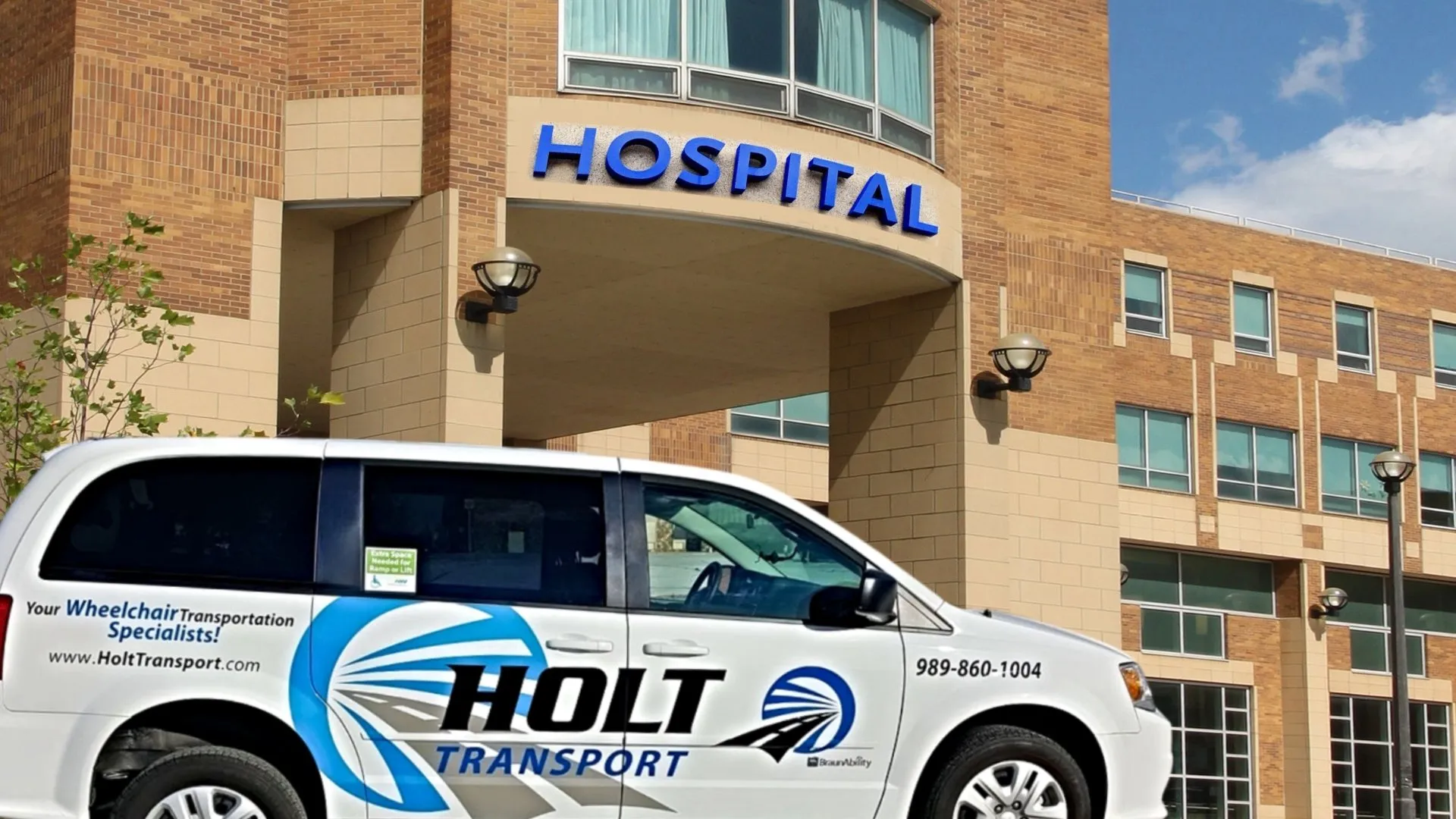Turn to Us for Medical Transportation Services in Saginaw, Grand Blanc, Flint, MI, and surrounding areas.
Trips completed since our opening in 2010:
900,000 and counting!
Holt Transport is here for you when you need us most
Get to Your Medical Appointment on Time
Hire us for transportation services in Saginaw, Grand Blanc, Flint, MI, and across Michigan state.
Do you have an upcoming doctor's appointment? Instead of relying on public transportation, turn to Holt Transport. We provide private transportation services in Saginaw, Grand Blanc, Burton, Flint, MI, and the surrounding Michigan areas. When you partner with us, we'll make sure you get to your appointment safely and on time.
Contact us today to learn more about our medical transportation company.
How can we help?
We provide a wide range of non-emergency transportation services to individuals with disabilities. You can rely on us for:
- Wheelchair transportation services
- Ambulatory transportation services
- Stretcher alternative transportation services
Our fleet consists of 45 vehicles, all 3-5 years old. Some of our vans are specifically designed to accommodate 24-inch bariatric wheelchairs. If you need any special assistance, please inform your driver in advance. Each vehicle is equipped with both interior and exterior dash cams for enhanced safety.
Call (989) 860-1004 now for private transportation services. We can drive you anywhere within the state of Michigan!


You can trust our team of reliable drivers
Holt Transport proudly provides reliable, non-emergency medical transportation services to those who need it most. Our founder recognized the limitations of traditional taxi services and was inspired to create a safer, cleaner and more comfortable option for individuals with disabilities.
Today, we're committed to delivering a personal and dependable experience for all our passengers. You'll appreciate that:
- All our drivers are drug-tested, background-checked and CTAA-PASS-certified
- We provide personalized and cost-effective options to meet your specific needs
- Our fleet of well-maintained vehicles are fully equipped to accommodate individuals with various medical conditions
- Holt Transport collaborates closely with Medicaid to offer transportation services that align with their standards and guidelines.
If you have any questions, don't hesitate to contact our medical transportation company today.
Medical Transportation Services in Michigan
Holt Transport is one of Michigan’s leading medical transportation services providers, ensuring patients receive timely and efficient transit to their medical appointments. Our team is highly trained and equipped with modern vehicles to guarantee safe and comfortable rides for all passengers, including those requiring handicapped transportation services in Michigan. We understand the unique needs of each patient, hence we tailor our services to ensure maximum comfort and safety during transit. Our professional drivers have undergone extensive training in handling medical emergencies that might arise during transportation, providing an added layer of assurance for our clientele. Furthermore, Holt Transport takes pride in its commitment to reliability. We always ensure our vehicles are always properly maintained and ready for service. This dedication to quality service has established Holt Transport as a trusted name in the medical transportation sector throughout Michigan. Additionally, our handicap transportation services are second to none. We provide specially designed vehicles equipped with wheelchair lifts and secure seating arrangements to cater to the specific needs of our handicapped clients.
Reviews
Jenelle McDonald
We hired Holt to transport my mother from her nursing home in Westland to another nursing home up north. My interaction with everyone that works there was so positive. Michelle provided me detailed estimates and was such a pleasure to talk to. Shannon drove my mother the 4-5 hours up north and took excellent care of her. She also called to provide me with updates since I’m out of state and couldn’t be there. She was in good hands and I can’t thank y’all enough.
Razz Berry
Transported my family member safely and promptly to a medical appointment. Waited to connect with family members at the appointment and verify the correct location. Exceeded our expectations in every way. Great communication throughout the morning.
Tammy Cook
I had to start using transportation through my insurance to get my daughter back and forth to chemo appointments due to an accident, I've had nothing but good experiences through Holt and one driver in particular Crystal is her name made us feel so comfortable with conversation and rider experience. Thank you for such excellent service

